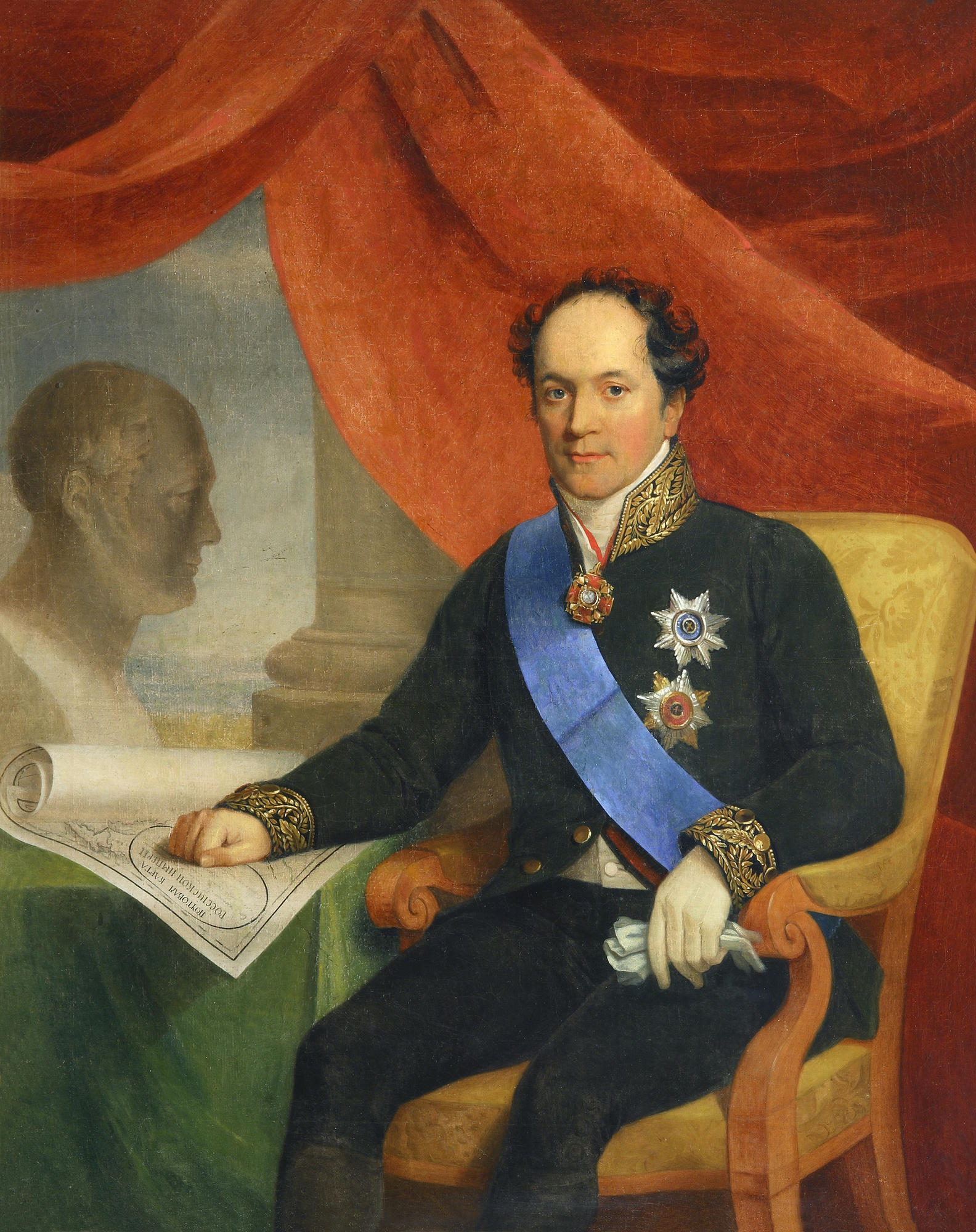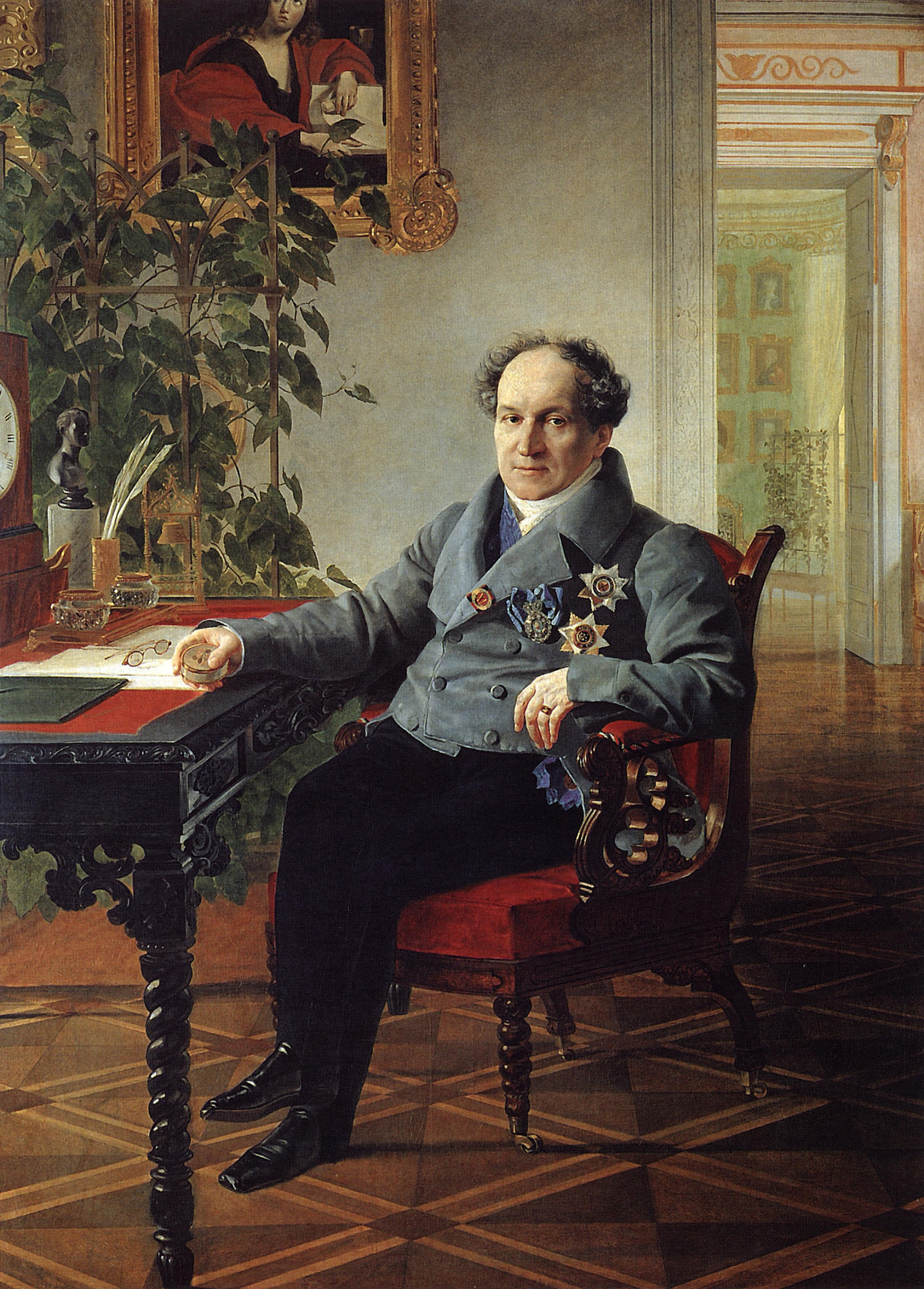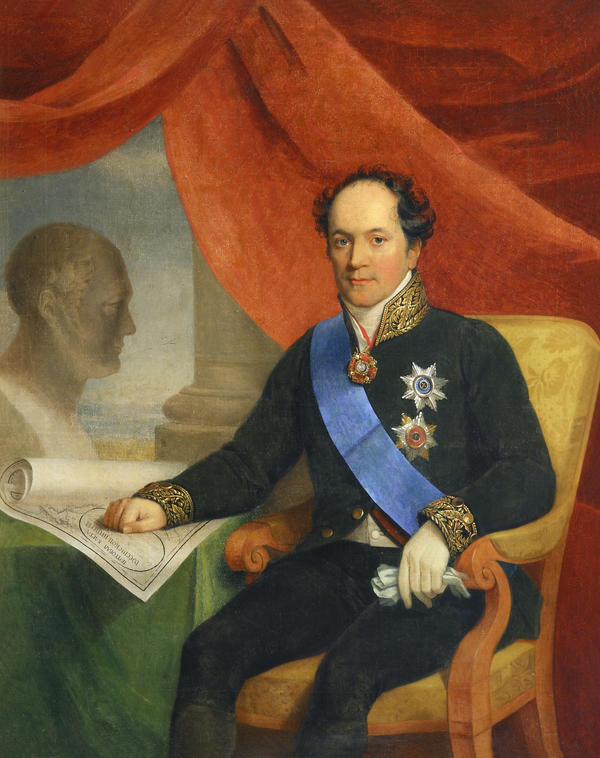Alexander Golitsyn was born in 1773. He was enrolled in the Page Corps and befriended the future emperor Alexander I during the reign of Ekaterina II.
During the reign of Pavel I Golitsyn was expelled from St. Petersburg.
Alexander I helped his childhood to be recalled friend from exile. Golitsyn headed the Holy Synod and was appointed as State Secretary. Alexander was one of the statesmen on the meeting with Napoleon in 1808. In 1816 Golitsyn was appointed as Minister of Public Education.
The joyful, cheerful prince changed over the time. Golitsin was diving into in mystical-religious teachings, piety became for him the main sign of real enlightenment. His religious beliefs formed the basis of the school system. Piety has become the basis of this system and as a result censorship has increased. The members of Orthodox Church rejected Golytsyn because of his obsession with mysticism. The Emperor was forced to resign the Prince. However, Golytsin managed to save relationships.
Golitsyn returned to public service during the reign of Nicholas I: he served as Chairman of General Assemblies, was a president of the ‘Human Society’ and took part in ‘Society 's Prisons of Trust.’ In 1843, the prince left his service and settled in Crimea, where he died a year later.
On the portrait of an unknown artist, Alexander Golitsyn is sitting in a chair made of Karelian birch, covered with yellow cloth. The prince is wearing a black uniform with a gold embroidery. A tall forehead is framed by falling dark hair. The prince’s gazing at the viewer. The left hand is clenching white gloves folded together, the right hand is resting on semi-opened Postal Map of the Russian Empire., there is a blue ribbon of the Order of Andrei the First-Called, over the right shoulder of Golitsyn. There are diamond signs of orders of Andrei the First-Called and diamond signs of the Order of St. Vladimir on the chest. There is an Order of Saint Anna on the ribbon. On the table is a sculpture portrait of Emperor Alexander I in profile The background of the painting is a red-colored drapery.
The author of the portrait is unknown. The painting is similar to Golitsyn’s portrait by Carl Brullov 's, 1840.
Alexander I helped his childhood to be recalled friend from exile. Golitsyn headed the Holy Synod and was appointed as State Secretary. Alexander was one of the statesmen on the meeting with Napoleon in 1808. In 1816 Golitsyn was appointed as Minister of Public Education.
The joyful, cheerful prince changed over the time. Golitsin was diving into in mystical-religious teachings, piety became for him the main sign of real enlightenment. His religious beliefs formed the basis of the school system. Piety has become the basis of this system and as a result censorship has increased. The members of Orthodox Church rejected Golytsyn because of his obsession with mysticism. The Emperor was forced to resign the Prince. However, Golytsin managed to save relationships.
Golitsyn returned to public service during the reign of Nicholas I: he served as Chairman of General Assemblies, was a president of the ‘Human Society’ and took part in ‘Society 's Prisons of Trust.’ In 1843, the prince left his service and settled in Crimea, where he died a year later.
On the portrait of an unknown artist, Alexander Golitsyn is sitting in a chair made of Karelian birch, covered with yellow cloth. The prince is wearing a black uniform with a gold embroidery. A tall forehead is framed by falling dark hair. The prince’s gazing at the viewer. The left hand is clenching white gloves folded together, the right hand is resting on semi-opened Postal Map of the Russian Empire., there is a blue ribbon of the Order of Andrei the First-Called, over the right shoulder of Golitsyn. There are diamond signs of orders of Andrei the First-Called and diamond signs of the Order of St. Vladimir on the chest. There is an Order of Saint Anna on the ribbon. On the table is a sculpture portrait of Emperor Alexander I in profile The background of the painting is a red-colored drapery.
The author of the portrait is unknown. The painting is similar to Golitsyn’s portrait by Carl Brullov 's, 1840.




